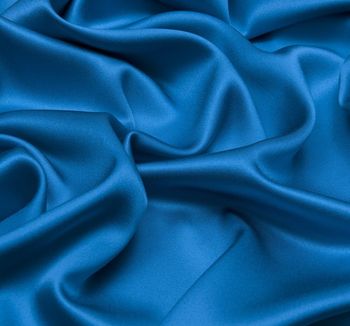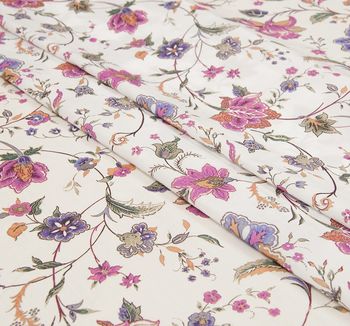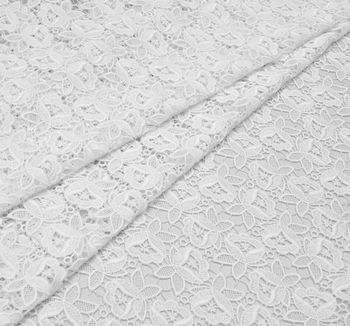Silk is a timelessly trendy natural fabric woven from the cocoons of silk worms. The world’s most famous fashion brands regularly apply it for various men’s and women’s outfits earning the admiration of the audience.
Luxury Fabrics – the Refined Taste of Haute Couture
It's not a secret in the fashion world, that the most exclusive fabrics are produced on a complex loom under careful supervision, often with a lot of handwork. The best examples are luxury fabrics we see on the catwalks – haute couture fashion is defined by unique textiles used to create eye-catching looks.
Once any fabric made of rare fibers, such as silk, cashmere, or Egyptian cotton, was considered ‘luxury’. Today, it’s more about the subtleties of design than actual composition. Embroidered lace, sequined tulle, fringed chiffon, appliqued wool, laser-cut silk or cotton – these are just some fabrics that belong to the luxury segment. There are also highly engineered materials that come in a variety of designs and take the whole notion of fabric to an entirely new level of performance. Many of them are suitable for high fashion looks.
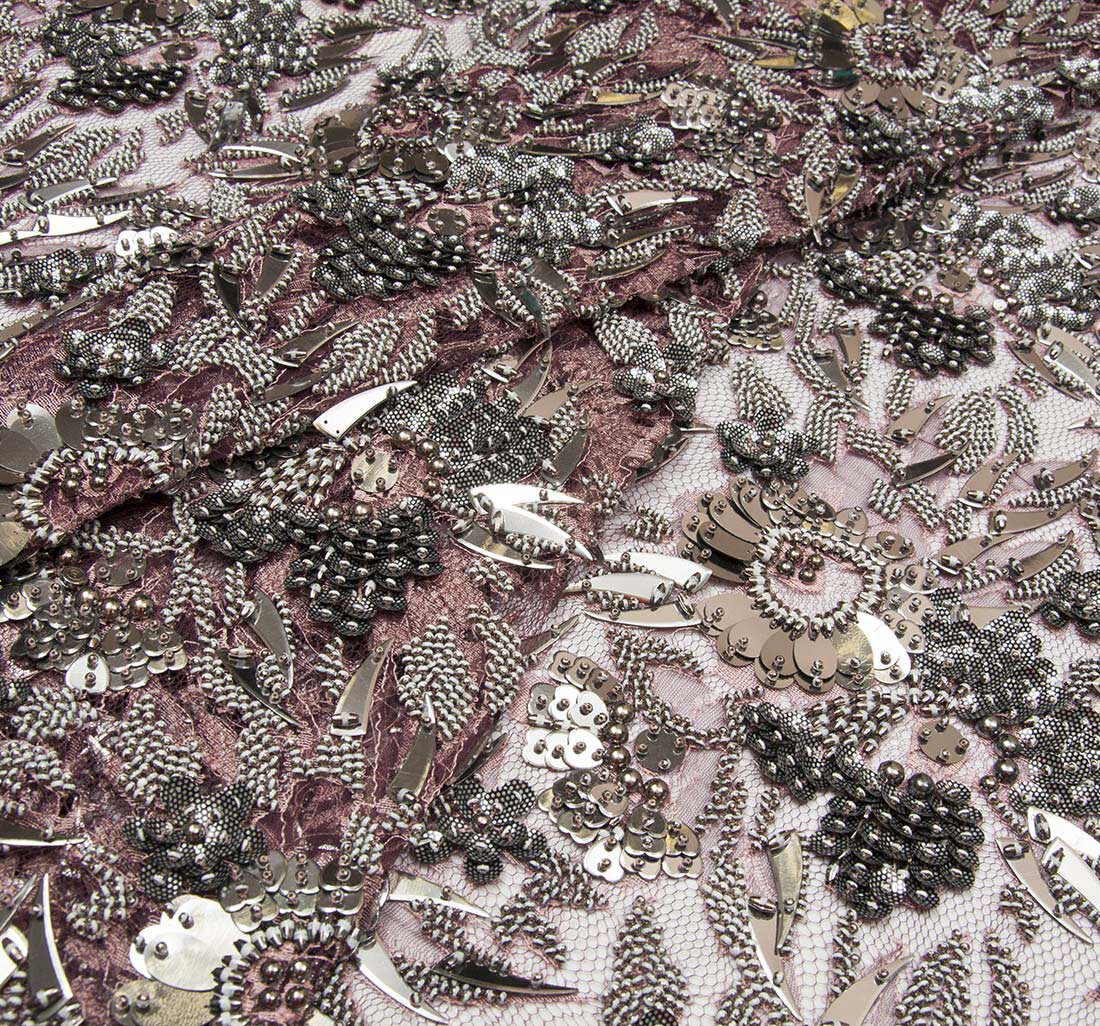
What Are the Types of Luxury Fabrics?
First, let’s draw a line between haute couture (or high fashion) and premium luxe fabrics.
The first notion refers to unique fabrics used by famous fashion houses in their high-end collections. They are either made to order or created by textile factories according to their own designs. Haute couture fabrics are very difficult to produce, since they are woven and finished on centuries-old looms or, on the contrary, with the help of advanced machinery. Many of them are embroidered and decorated by hand, and the décor is exclusive. Think gorgeous brocade, beaded guipure lace, sequined silks of superior quality – these are luxury.
The second notion refers to fabrics made of rare raw materials. Sea Island cotton, vicuna, alpaca, cashmere – these are expensive, top quality fibers available in limited quantities. You will not necessarily spot them in next fashion season. Premium fabrics are timeless and do not need help from the fashion industry to stay in demand. A good example is vicuna. It is the rarest fiber in the world, from 9 to 12 microns, and each animal can give no more than 0.5 kg of fleece. It is then woven into one of the softest fabrics known to man, and to get hold of such precious cloth is not easy. Given all that, it becomes clear why a vicuna wool coat costs around $20,000, and a vicuna wool scarf starts from $4,000.
Luxury Fabric vs Designer Fabric
While some luxury fabrics are classified as designer, and some designer fabrics are considered luxury, they are not the same. What is the difference?
Luxury fabric is an expensive cloth either
- woven of exclusive fibers,
- with one-of-a-kind design, or
- made using high-tech machinery or handwork.
Designer fabrics are those created by specific designers. In other words, there is an author behind every novelty print or pattern. They are usually of impeccable quality and can be found both in haute couture and pret-a-porter clothes collections.
Most designers buy their fabrics from manufacturers. Since fabric producers work one season ahead of fashion companies, every designer can choose what he or she likes from the collections they offer. Some fashion houses create their own fabrics or might request special prints, colors and designs, but this is rather the exception than the rule.
There are also several international exhibitions that showcase advances in fabric production. Milano Unica in Milan, Italy and Premiere Vision in Paris, France are the most renowned trade fairs where every luxury fabric supplier can display their collections.
Exclusive Fabrics and Their Use
There are many shops and boutiques where one can buy fabrics by the yard. There’s no shortage of ordinary materials like cotton, linen, wool, viscose, etc. suitable for everyday wear. However, when it comes to creating something unique to be worn on a big day, one should think twice before taking a decision.
A rule of thumb shows that sometimes a well-chosen cloth is half the battle. The right design will make your gown perfect without extra effort. If the fabric is exclusive, the chances to see someone wearing the same style are almost zero. But how do you choose unique design?
Here’s what you need to know about types of exclusive fabrics:
| Type | Characteristics | Best For |
|---|---|---|
| Brocade | A jacquard fabric with a raised texture, woven with silver or golden threads | Elegant dresses, jackets, skirts, coats, vests |
| Lamé | Lightweight fabrics made with metallic yarn, usually golden or silver in color | Fancy dresses, jackets, skirts, tops, trims |
| Laser cut fabrics | Laser treated cloths with sealed edges and clean cuts, highly detailed designs | Tops, dresses, skirts, shirts, overlays |
| Appliqued fabrics | Adorned with appliques of all sorts for 3D effect | Gowns, skirts, bridal dresses, overlays |
| Embroidery | Resembles delicate guipure lace, often woven with multiple colors | Gowns, skirts, bridal dresses, overlays |
| Embroidered lace | Chantilly, guipure, or corded lace decorated with sequins, glass beads, pearls, Swarovski crystals, feathers, satin stitch embroidery | Gowns, skirts, bridal dresses, overlays |
Just like regular fabrics, exclusive designs are perfect for dressmaking. They are most often chosen when one’s getting ready for a special occasion, such as a gala dinner, a wedding, an anniversary celebration party or an award event. It all comes down to our preferences in color, texture and pattern: some go with black and blue shades, some opt for sparkling décor, others prefer cotton or silk fabrics to feel comfort every moment of having them next to the skin. Still, for many of us it’s the pattern that helps make a choice.
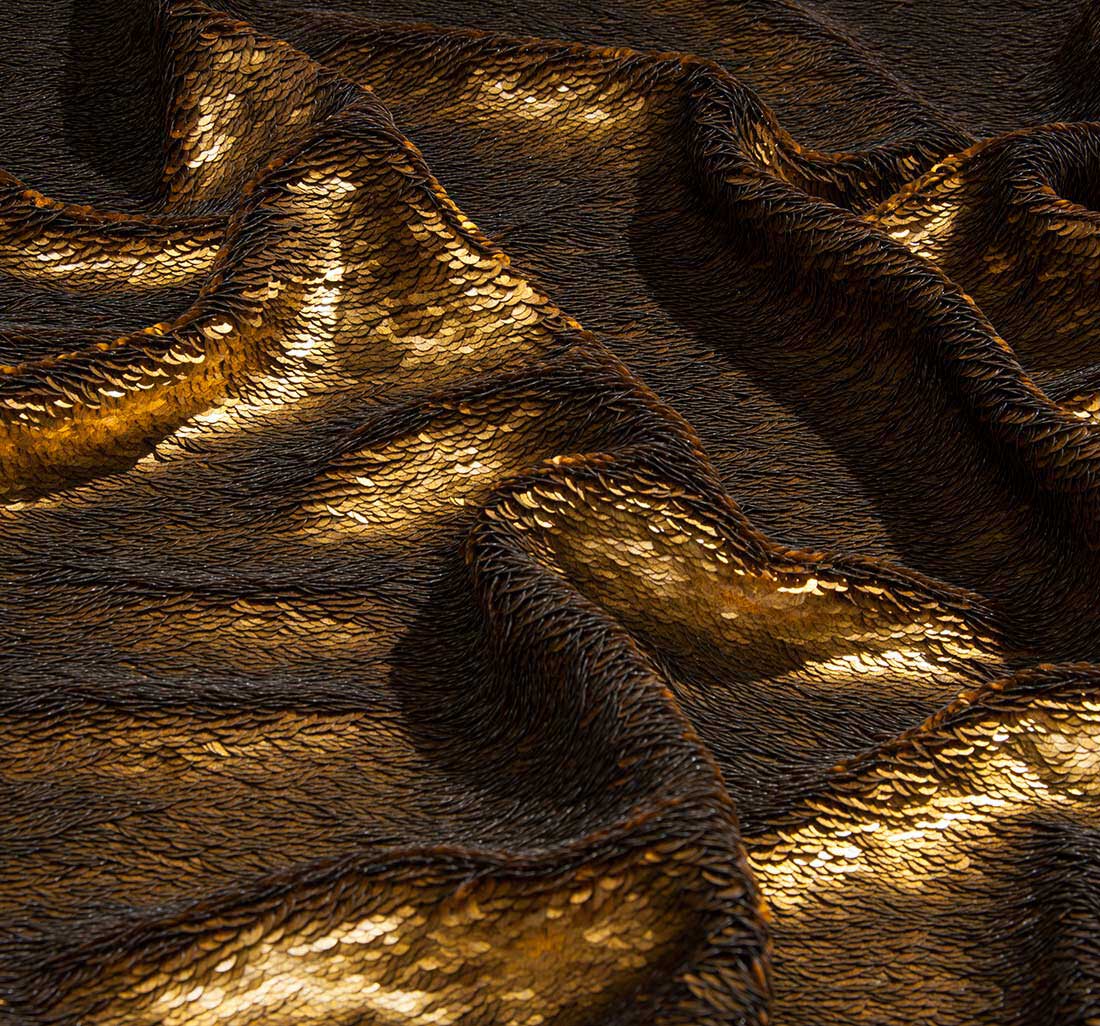
Popular Patterns for Embroidery Fabrics in 2019
Everybody loves embroidery. It looks stylish, elegant and rich. It can be done on any ground, from lightweight tulle and sheer organza to dense wool crepe and heavy cotton. The thinner the fabric to be embroidered, the harder it is to actually embroider it. Silk fabrics tend to be slippery, so the task becomes a real challenge. Imagine how difficult it is to decorate silk chiffon with sequins, frills or satin stitch, without damaging it. If not for state-of-the-art technologies, most fabrics would be distorted beyond recognition.
What are the most popular patterns one can expect to see on such fabrics?
- Floral
- Botanical
- Geometric
- Abstract
- Ornamental
- Conversational
- Stripes
- Waves
- Zigzag
- Degrade
- Feathers
Choose fabrics with satin stich embroidery if you like your clothes to be silky soft to the touch. Consider beaded lace and sequined tulle if you are planning a special occasion gown or a couture style bridal dress (ivory, ecru and off-white are timeless classics, but you can add color accents to be in sync with the theme of the wedding, or just for the beauty of it!). Go for laser-cut fabrics if your sewing project requires something bold and edgy. Try cloths decorated with ostrich feathers to stay in tune with the all-the-roar trend. Let your imagination give you a cue.
Top 6 High Fashion Fabric Brands
What are the most famous and trustworthy manufacturers that produce unique and exclusive fabrics? Here is a short list of suppliers that have a proven reputation in delivering best quality masterpieces.
- Jakob Schlaepfer (Switzerland). Luxury and innovative design, laser cutting, sequins, guipure embroidery, premium tweeds, hologram organza – this is what you can expect to find at Schlaepfer. Advanced technologies and creative minds deliver textiles worth serenading.
- Forster Rohner (Switzerland). First class embroidery, lace and tulle adorned with appliques, crystals, beads, and sequins. This Swiss company has it all: the most delicate patterns, the ultimate color palette, the trendiest textures.
- Sophie Hallette (France). Tulle and lace in all imaginable patterns, colors, weights. This French manufacturer seeks inspiration in the outside world and decorates its collections with beads, glass bugles and embroidery.
- Solstiss (France). Highest quality lace and tulle embroidered with beads, sequins, threads, cords. Trendy colors and classic designs are the very soul of French lace weaving.
- Aldo Bianchi (Italy). Luxurious tulle and lace decorated with embroidery, crystals, beads, sequins. This Italian brand is synonymous with quality and style.
- HOH (Austria). Luxury and highly detailed designs on tulle, silk, organza; guipure lace, sequin embroidery, linen, premium tweeds. This fabric supplier based in Austria combines innovations with time-tested technologies.
These luxury brands, as well as many others, supply famous fashion houses with fabrics, which are then turned into pret-a-porter and haute couture dresses, gowns, skirts and other clothing items. Their product lines include decorated fabrics and embroideries, as well as high quality silks, cottons, linens, wools, and various blends.
Dress Ideas from Haute Couture Spring-Autumn 2019
High fashion is inspiring. It seems the dress concept has been explored from top to bottom, but then a new season comes and brings along a whole set of ideas. The 2019 runways are swarming with:
- puff and exaggerated shoulders,
- extra large bows,
- ruffles,
- ostrich feathers,
- multicolored fur,
- dazzling lame.
Some of the most popular textures include silk, leather, velvet, organdie, sequins, lace, tulle, wool and cotton. Whether you stay with one trend and expand on it, or combine several ideas, you’re bound to be a success.
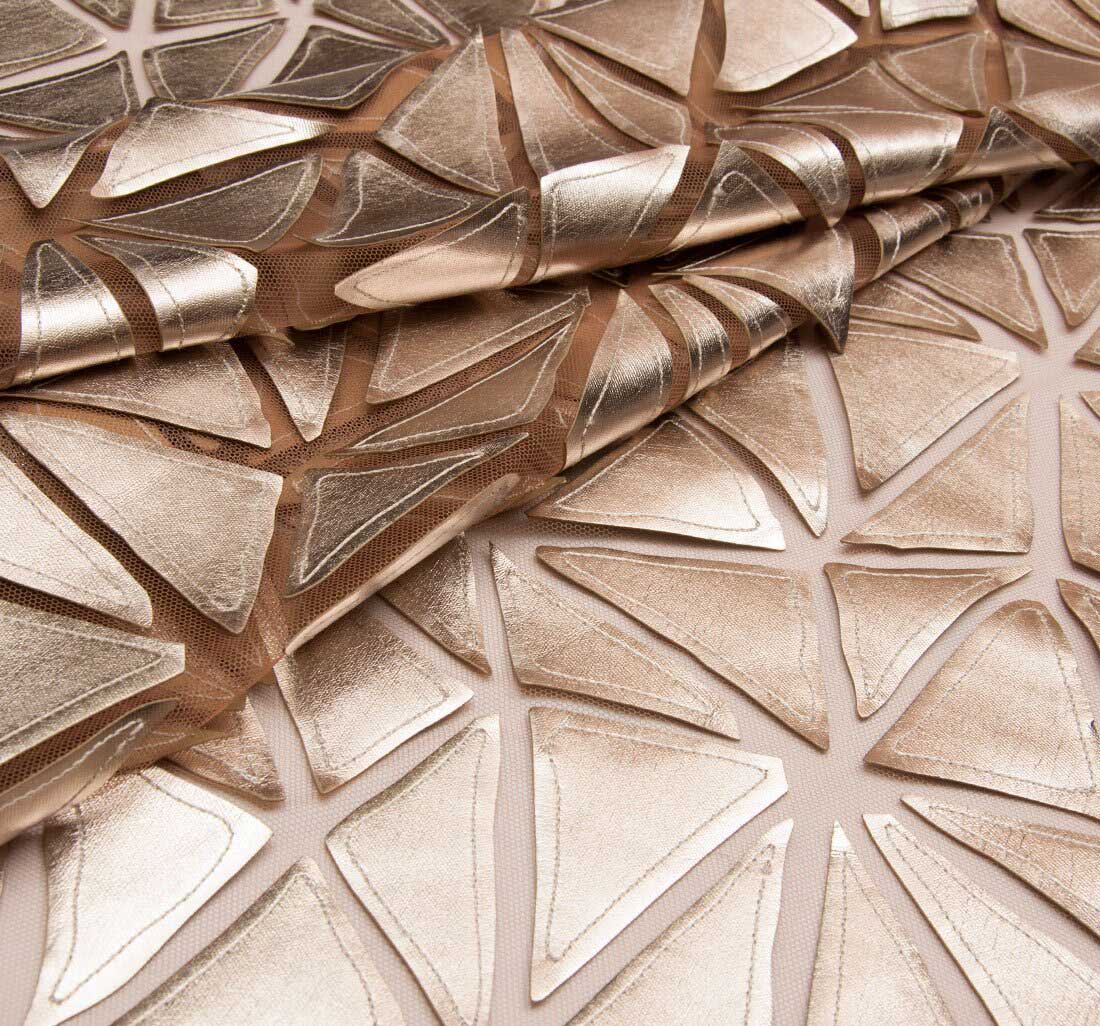
Here are some cues one can take from the catwalks and translate them into stunning dresses with the help of luxury fabrics:
- a long dress made out of velvet fabric and decorated with fur,
- an A-line gown scattered with sequins,
- a straight dress with ruffles,
- a high-slit silk dress in red with open shoulders,
- a flowing chiffon gown with long sleeves and a voluminous bow at the neck,
- an embroidered nude silk gown with a matching cape or a highly detailed jacket,
- a long pleated dress with a deep V-neckline,
- a deconstructed short dress cinched at the waist,
- a fit-and-flare Chantilly lace dress with ¾ sleeves,
- a cocktail dress made of lamé,
- a long bustier dress in embroidered silk,
- an evening gown with organdy skirt,
- an amphora-shaped tweed dress with fringed or feather trims.
Luxury Fabrics Care Tips
Every fabric should be treated with respect. If you know how to care for the material you’ve chosen and follow the sewing rules developed for it, it’ll serve you for ages. Exclusive fabrics require ultimate attention, since each one is unique and obliges you to tread carefully unless you are not afraid of spoiling it.
First, luxury dress fabrics are masterpieces. Needless to say, it takes a long time to create a high-end material with a stunning design. And that’s the reason why such cloths should be cut and sewn only by high quality professionals. Choose a skilled dressmaker who specializes in making luxury clothing and knows how to work with expensive fabrics. If your dream is a guipure lace dress, make sure the tailor you’ve selected has already created such outfits before, because this delicate material requires much handwork, especially if it’s strewn with beads and sequins. If it’s a tweed jacket you’re thinking about, your tailor must be experienced in that, etc.
How does one care for premium fabrics? Dry-cleaning is the best way to keep them neat. Avoid washing expensive fabrics, or you might permanently damage them. Entrust cashmere, vicuna, lace or embroidered silk to cleaning professionals who know how to do it correctly.
The best thing about haute couture fabrics is that they are a source of inspiration for designers and sewists. Everything about them speaks style: from unbeatable quality of raw materials to intricate patterns and level of workmanship. Designer dress fabrics are the number one choice if you value fashion, elegance and sophistication. Clothes made of such chef d’oeuvres can be passed from one generation to another as heirloom pieces. Like diamonds and emeralds, luxury fabrics are a perfect investment, but this time you invest in your wardrobe.
Luxury Fabrics at Tissura
Luxury fabrics at Tissura are represented in an extensive regular collection of guipure laces, embroidered tulles, jacquards, organza and other fabrics, relating to the haute couture segment. To give you a brief impression of them, the most exquisite ones are represented in the table below. Each of those fabrics deserves a detailed description, which you can find on their product pages by clickling on the pictures:
Haute couture guipure lace fabric, 667 € (799 US$) per one running metre;
Guipure lace fabric, 854 € (1,056 US$) per one running metre;
Metal embroidered Chantilly lace, 136,60 € (169 US$) per one running metre;
Silk jacquard fabric, 305 € (378 US$) per one running metre
How to stay cool on a hot summer day? Wear fabrics built for the heat. Cotton, linen, viscose, silk – there are dozens of summer-friendly materials you can choose for your wardrobe. The best fabric to opt for when the temperature rises should be breathable and comfortable.
The wedding dress is one of the most important clothing items a woman gets to choose in her lifetime. It can be made of silk or cotton, lace or tulle, be strewn with sequins or embroidered with beads.
.jpg)
.jpg)
.jpg)
.jpg)
